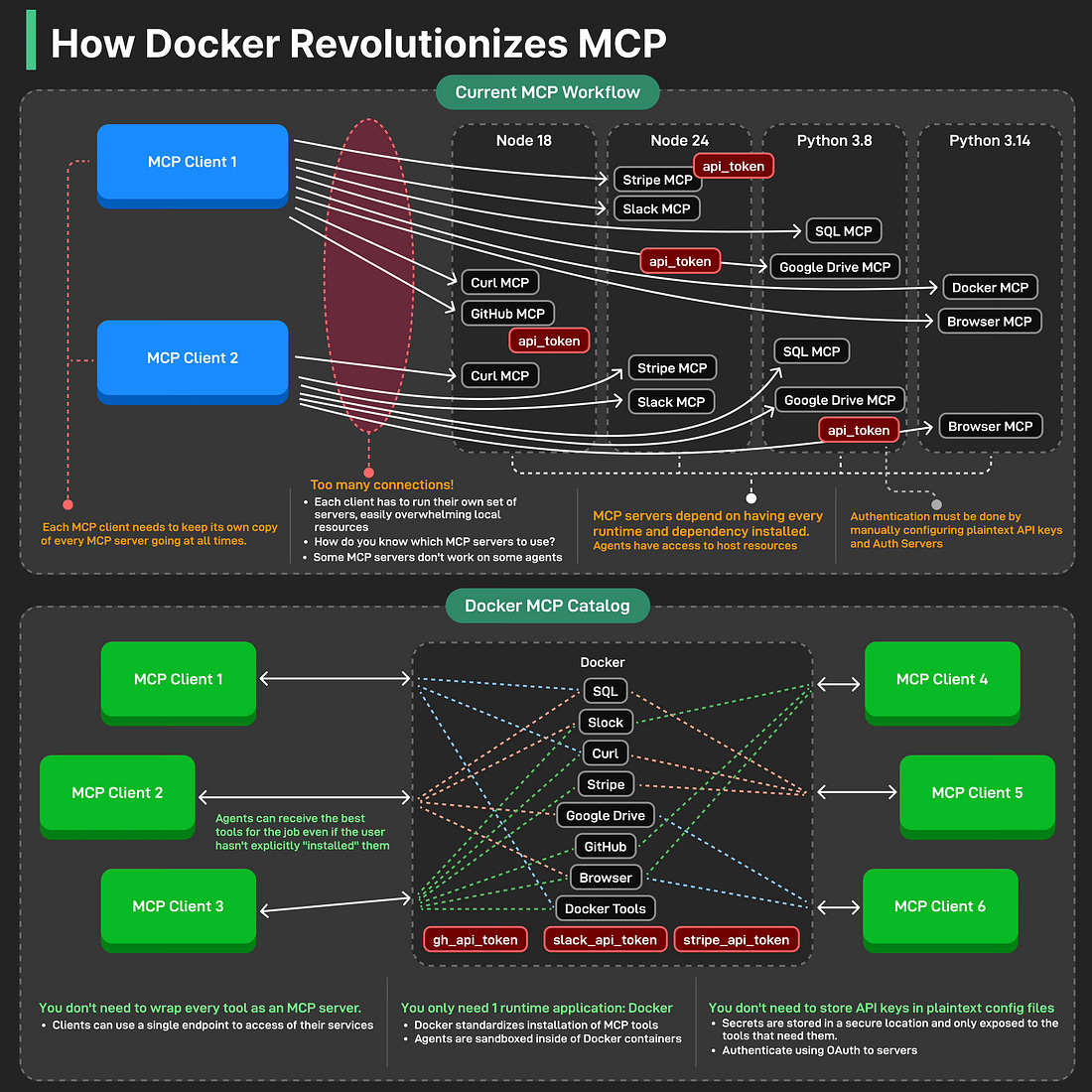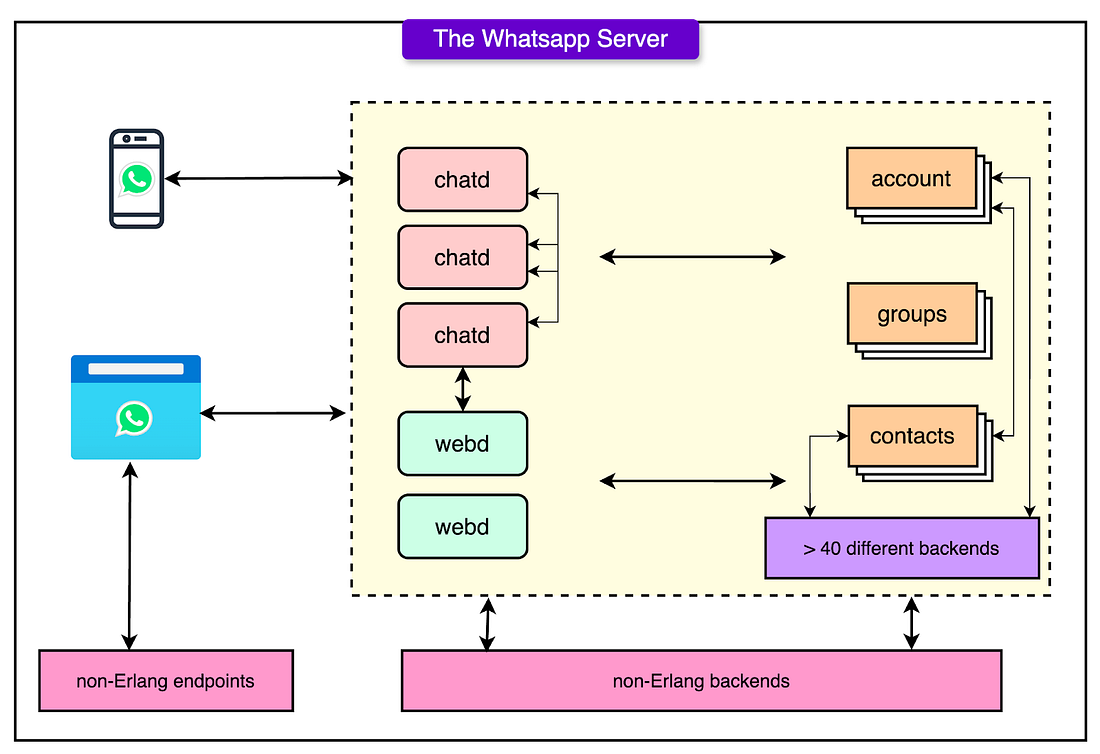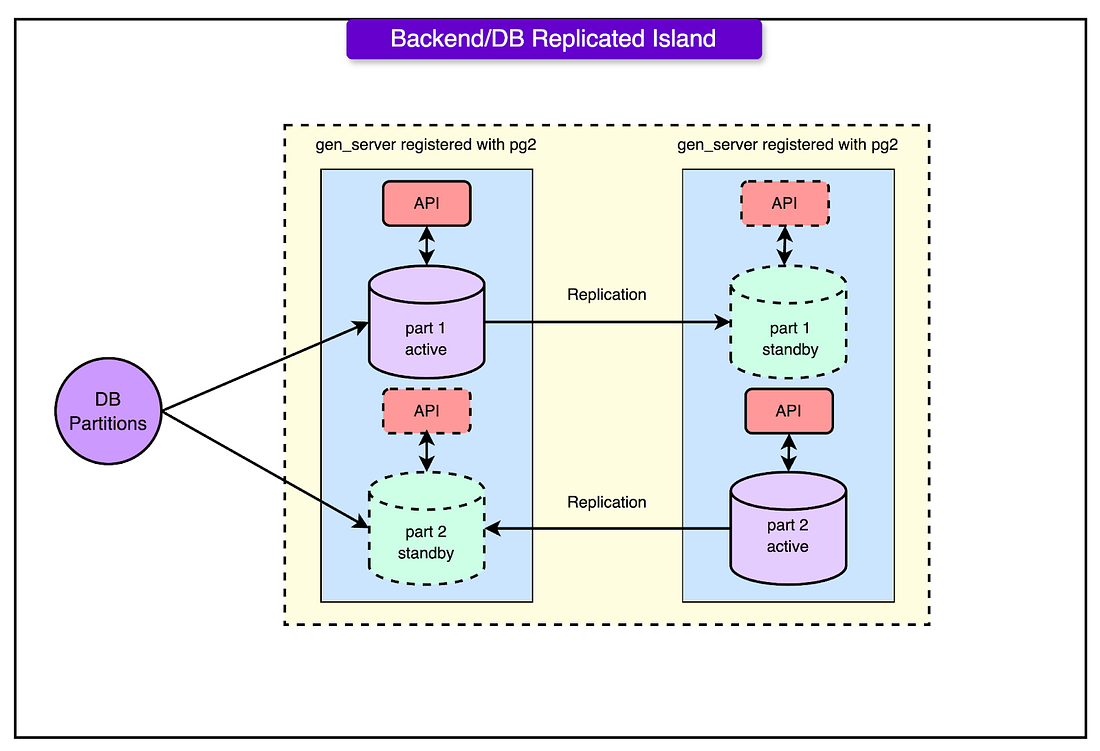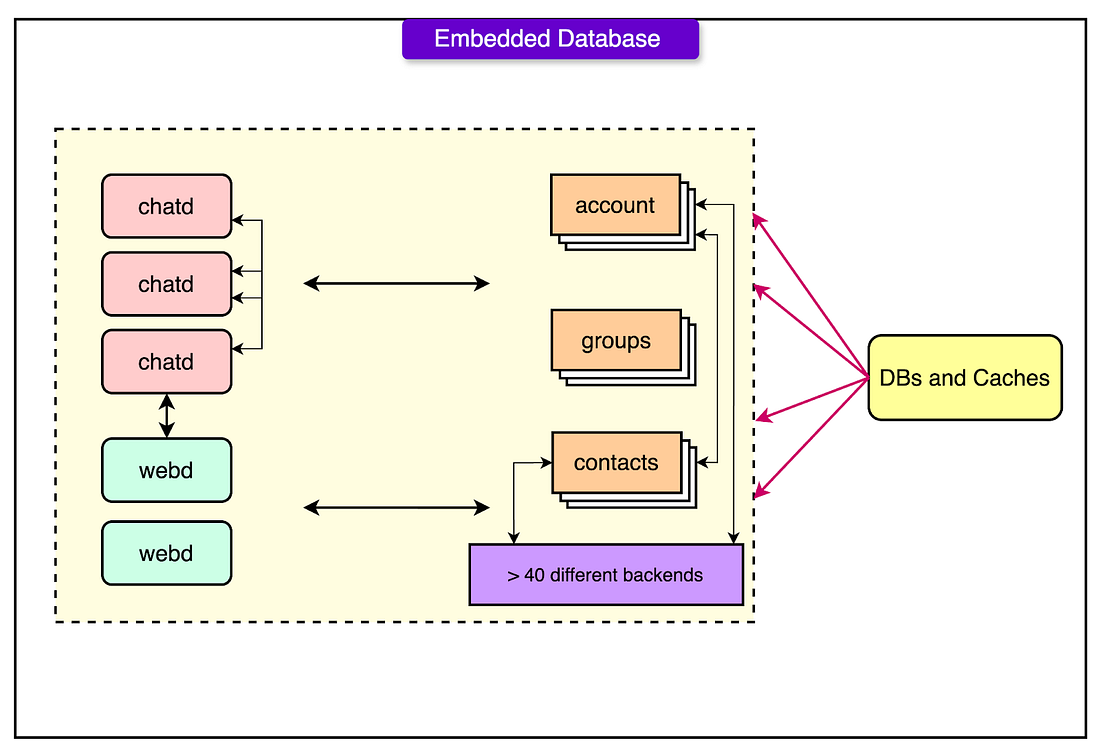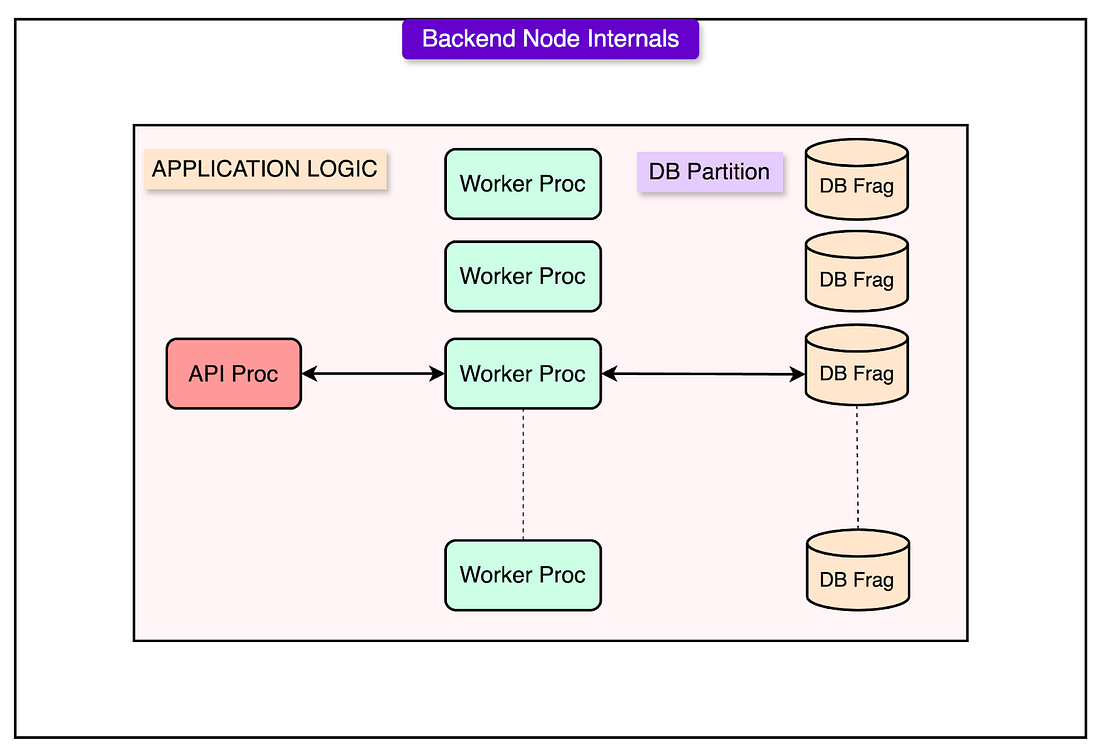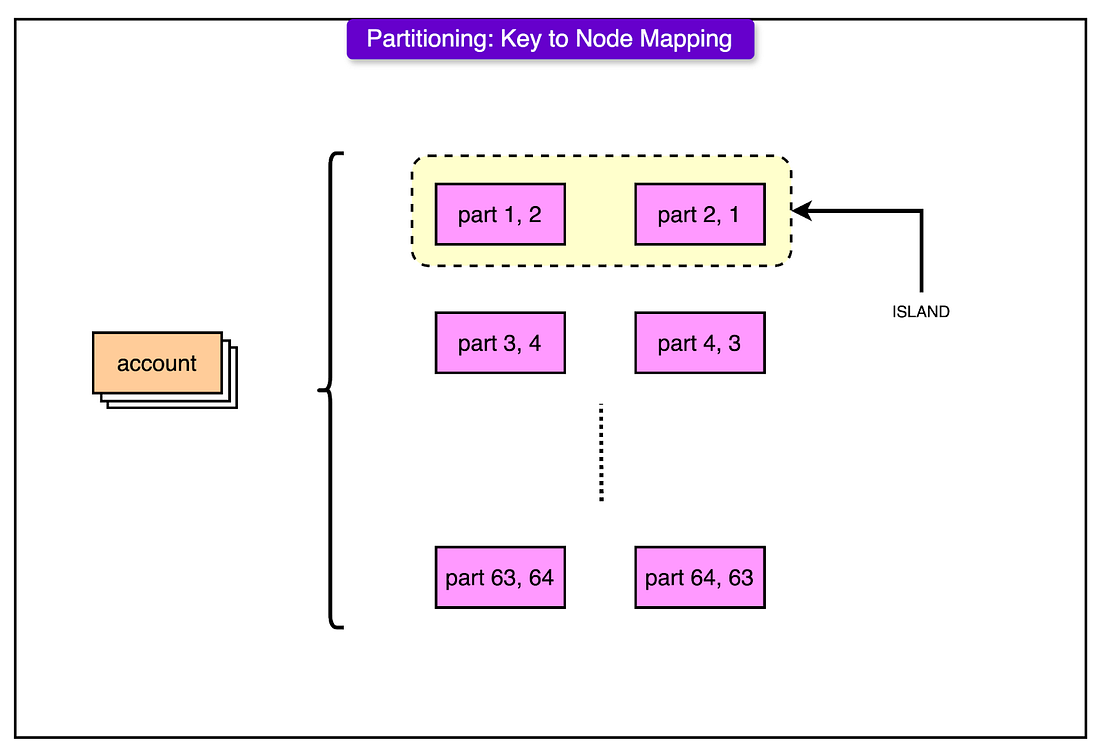Archives
- By thread 5315
-
By date
- June 2021 10
- July 2021 6
- August 2021 20
- September 2021 21
- October 2021 48
- November 2021 40
- December 2021 23
- January 2022 46
- February 2022 80
- March 2022 109
- April 2022 100
- May 2022 97
- June 2022 105
- July 2022 82
- August 2022 95
- September 2022 103
- October 2022 117
- November 2022 115
- December 2022 102
- January 2023 88
- February 2023 90
- March 2023 116
- April 2023 97
- May 2023 159
- June 2023 145
- July 2023 120
- August 2023 90
- September 2023 102
- October 2023 106
- November 2023 100
- December 2023 74
- January 2024 75
- February 2024 75
- March 2024 78
- April 2024 74
- May 2024 108
- June 2024 98
- July 2024 116
- August 2024 134
- September 2024 130
- October 2024 141
- November 2024 171
- December 2024 115
- January 2025 216
- February 2025 140
- March 2025 220
- April 2025 233
- May 2025 239
- June 2025 303
- July 2025 127
-
Kumail Nanjiani is speaking at DASH!
We’re excited to announce that Kumail Nanjiani—Oscar-nominated writer, Emmy-nominated actor, and comedian—will be speaking at DASH!
This year, we’re reimagining the conference experience—introducing new speakers, stages, and spaces crafted for deeper learning, impactful networking, and inspiration to move your work forward. Take a first look at our 2025 speaker lineup.
Get insights from world-class experts. Eric WeissSenior Software Engineer, Coinbase
Eric WeissSenior Software Engineer, Coinbase Connie WangSenior Staff Software Engineer, Rivian and Volkswagen Group Technologies
Connie WangSenior Staff Software Engineer, Rivian and Volkswagen Group Technologies Devin BurnetteSenior Staff Software Engineer, Developer Experience, Betterment
Devin BurnetteSenior Staff Software Engineer, Developer Experience, Betterment Trevor BramwellSenior Systems Engineer, The Linux Foundation
Trevor BramwellSenior Systems Engineer, The Linux Foundation Alan ShermanSenior Cloud Operations Engineer, The Linux Foundation
Alan ShermanSenior Cloud Operations Engineer, The Linux Foundation Dina Abu KhaderSite Reliability Engineer, Expedia Group, Inc.Cheers,
Dina Abu KhaderSite Reliability Engineer, Expedia Group, Inc.Cheers,
The DASH Team
*Early bird pricing ends April 30, 2025.Visit our email preference center to unsubscribe or update subscription options© 2025 Datadog Inc, 620 8th Ave, 45th Floor, New York, NY 10018This email was sent to info@learn.odoo.com.
by "The DASH Team" <dash@datadoghq.com> - 02:01 - 29 Apr 2025 -
When will self-driving cars be mainstream?
On McKinsey Perspectives
Sooner than you may think
by "Only McKinsey Perspectives" <publishing@email.mckinsey.com> - 01:36 - 29 Apr 2025 -
High tenacity sewing thread manufacturer in China
Dear info,
Glad to hear that you're on the market for high tenacity sewing thread. High tenacity sewing thread is widely used in Leather Bag/Leather Shoes/Leather Sofa/Parachute Sew tough material such as leather, denim, canvas, vinyl, or thick fabric; Repair shoes, coats, jeans, khaki pants, marine and sail gears, mattresses, boat and car covers, tents, awnings, couches, draperies, carpets, or area rugs; Also great for webbing, hair weaving, and beading. We specialize in this field for about 30 years, with good quality and pretty competitive price.
Should you have any questions, please do not hesitate to contact me. FREE SAMPLES and colour chart will be sent for your evaluation!
Thank you!Best regards
Jacky
Rugao Rongli Thread CO., LTD.
Tel: 008618362114755
Wechat:008618362114755
Whatsapp:008613584680449
Mail:rgrongli@gmail.com
Website:https://rgrl.en.alibaba.com
by "sales003" <sales003@rl-thread.com> - 10:57 - 28 Apr 2025 -
Talep Ettiginiz SWIFT Mesaji
Sayın Müşterimiz,
Talep ettiğiniz SWIFT mesajı ekte yer almaktadır.
Saygılarımızla,
Türkiye İş Bankası
by "Turkiye Is Bankasi A.S" <bilgilendirme@ileti.isbank.com.tr> - 10:35 - 28 Apr 2025 -
Introduction and Potential Collaboration Opportunity
Dear info,
Good morning!
I hope this message finds you well. I recently visited your professional website and was greatly impressed by your leadership in the artificial flower industry. It is evident that your company is committed to delivering high-quality products while also making significant efforts to reduce costs, which is highly commendable.
Allow me to introduce myself. I am Ally from Dongguan Hmflowers Industrial Company Limited. With over 25 years of experience in the artificial flower industry, we have built a strong reputation for providing high-quality products at competitive prices. I am confident that we can meet your quality standards while reducing costs by at least 10%. Additionally, we specialize in custom production based on your specific designs.
To demonstrate our capabilities and the quality of our products, I would like to extend an invitation for you to visit our factory. Alternatively, I would be happy to send you a sample for your evaluation.
I look forward to the opportunity to discuss how we can support your objectives and explore potential collaboration.
Best regards,
Ally
Web:https://www.artificialflowers-factory.com/
Whats App:+86-18038381627
by "Jetu Sadic" <jetusadic@gmail.com> - 06:45 - 28 Apr 2025 -
Precision Engineering for Hydraulic Hoses, Seals, and Valves
Dear info,
I hope all is well. I am reaching out to introduce Shaanxi Kelong New Material Technology Co., Ltd., a leading provider of high-quality industrial products. We offer a wide range of solutions across four key categories:
Hydraulic Hoses: Steel wire wound hydraulic hose, Steel wire braided hydraulic hose, Aviation cotton braided rubber hose, PTFE hoses and components, high pressure/ultra-high-pressure rubber hose for hydraulic support, high pressure hydraulic rubber hose;
Seals: Hydraulic supports, cylinders, special rubber sealing components, static seals, dynamic seals and other seals, Aviation seals assembly,wind power equipment sealing assembly, high speed rail-way sealing product assembly;
Mining Equipment: Mining Equipment: Complete sets of equipment for rapid moving of fully mechanized coal mine face, Coal mine underground hydraulic support/support equipment complete sets of moving special vehicles, Full mechanized coal mine face rapid moving equipment, Underground Coal Mining Support Equipment Carrier Vehicles, Underground Coal Mining Support Equipment Carrier Vehicles;
Explosion-proof Valves: Flameproof valve, logic valve, proportional valve, reversing valve, etc
Please let me know if you’d like more information on any of our products or if you'd be open to further discussion. I look forward to hearing from you.
Yours sincerely,
Linda GaoOverseas Dept. Director
----------------------------------------------------------------------------------------------
Shaanxi Kelong New Material Technology Co.,Ltd
https://www.snkelong-sealhose.com/
Add.: Mid-Yongchang Rd,Weibin St.,High-tech Zone,Xianyang,Shaanxi Province, China
Tel/Fax: +86-29-3332 6567
Mobile/What's App/Wechat: +86-153 3914 7989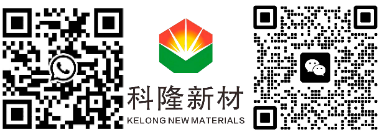
by "Sophia" <Sophia@klcoalmine-sealhose.com> - 05:25 - 28 Apr 2025 -
Introducing Our High-Quality Textile Products for Your Business
Dear Sir,
Good day!
I hope this message finds you well. My name is Ling, and I am writing to introduce our company, Shaanxi Huazuo Impex Co., Ltd. which specializes in the production and supply of high-quality textile products.
We offer a wide range of textiles including beach towels, bath towels,sport towels, face towels, kitchen towels, tea towels, table cloths ,ponchos, aprons, waterproof mattress protector, pillow protector,waterproof pants, PVC diapers etc, all of which are crafted to meet international standards. Our products are known for their good air permeability ,durability, comfort,High cost performance etc., and we believe they could be a great addition to your product line.Please visit our website for more product details https://huazuo.en.alibaba.com
We would be happy to send you more detailed information about our products or samples for your evaluation. If you are interested, I would be glad to arrange a meeting or call at your convenience to discuss the product details you want.
Kindly forward this mail to the concerned person in import/procurement department of your company.
We also look forward to your inquiry.
Best Regards
Ling Yu
Shaanxi Huazuo Impex Co., Ltd.
WhatsApp:+8613670218644
E-mail: dept06@shaanxihuazuo.com
Website: https://huazuo.en.alibaba.com
Office Address: Room 902, East Of Building A, Fengye Square, Gaoxin Road, High-Tech Zone, Xi 'an, Shaanxi, China
by "ForgeVise" <ForgeVise@shaanxihuazuo-raws.com> - 02:17 - 28 Apr 2025 -
Find high-quality textiles for your next project with YiweiGroup
Dear info,
I hope this message finds you well. I am writing to introduce you to our company and our exceptional flagship product, designed to meet the highest standards of quality and versatility, which are polyester, nylon, RPET and other textiles.
For the past 20 years, YiweiGroup has been at the forefront of the textile manufacturing industry. Our commitment to innovation, quality, and customer satisfaction has established us as a trusted partner to businesses worldwide.
YiweiGroup is one of the manufacturing leaders for textile in China. We specialize in developing and producing fabrics for bag and luggage products, apparel products, home textile products and also outdoor products.
We invite you to explore the remarkable potential of our products for your upcoming projects. By choosing YiweiGroup, you gain a partner committed to helping you achieve excellence in your product offerings.
Please do not hesitate to contact us for samples, detailed product specifications, or any further information you may require. We look forward to the opportunity to collaborate with you and support your business's growth and success.
Thank you for considering YiweiGroup as your trusted textile provider.
Warmest regards,
Yongzhao (Sam) Lu
Marketing Specialist
YiweiGroup Textile. Co
market@yiweigroupcn.com
https://www.yiweigroups.com
P.S.You can visit our global sources online store at https://yiweitextile.manufacturer.globalsources.com/homepage_6003002332362.htm
to stay updated on our latest products and innovations.
by "Puty Heduan" <monsterachimut188@gmail.com> - 02:12 - 28 Apr 2025 -
How WhatsApp Handles 40 Billion Messages Per Day
How WhatsApp Handles 40 Billion Messages Per Day
In this article, we’ll take a technical dive into how WhatsApp built its architecture and the challenges the engineering team faced during this journey.͏ ͏ ͏ ͏ ͏ ͏ ͏ ͏ ͏ ͏ ͏ ͏ ͏ ͏ ͏ ͏ ͏ ͏ ͏ ͏ ͏ ͏ ͏ ͏ ͏ ͏ ͏ ͏ ͏ ͏ ͏ ͏ ͏ ͏ ͏ ͏ ͏ ͏ ͏ ͏ ͏ ͏ ͏ ͏ ͏ ͏ ͏ ͏ ͏ ͏ ͏ ͏ ͏ ͏ ͏ ͏ ͏ ͏ ͏ ͏ ͏ ͏ ͏ ͏ ͏ ͏ ͏ ͏ ͏ ͏ ͏ ͏ ͏ ͏ ͏ ͏ ͏ ͏ ͏ ͏ ͏ ͏ ͏ ͏ ͏ ͏ ͏ ͏ ͏ ͏ ͏ ͏ ͏ ͏ ͏ ͏ ͏ ͏ ͏ ͏ ͏ ͏ ͏ ͏ ͏ ͏ ͏ ͏ ͏ ͏ ͏ ͏ ͏ ͏ ͏ ͏ ͏ ͏ ͏ ͏ ͏ ͏ ͏ ͏ ͏ ͏ ͏ ͏ ͏ ͏ ͏ ͏ ͏ ͏ ͏ ͏ ͏ ͏ ͏ ͏ ͏ ͏ ͏ ͏ ͏ ͏ ͏ ͏ ͏ ͏ ͏ ͏ ͏ ͏ ͏ ͏ ͏ ͏ ͏ ͏ ͏ ͏ ͏ ͏ ͏ ͏ ͏ ͏ ͏ ͏ ͏ ͏ ͏ ͏ ͏ ͏ ͏ ͏ ͏ ͏ ͏ ͏ ͏ ͏ ͏ ͏ ͏ ͏ ͏ ͏ ͏ ͏ ͏ ͏ ͏ ͏ ͏ ͏ ͏ ͏ Forwarded this email? Subscribe here for moreBuild to Prod: Secure, Scalable MCP Servers with Docker (Sponsored)
The AI agent era is here, but running tools in production with MCP is still a mess—runtime headaches, insecure secrets, and a discoverability black hole. Docker fixes that. Learn how to simplify, secure, and scale your MCP servers using Docker containers, Docker Desktop, and the included MCP gateway. From trusted discovery to sandboxed execution and secrets management, Docker gives you the foundation to run agentic tools at scale—with confidence.
Read the guide: MCPs to Prod with Docker
Disclaimer: The details in this post have been derived from the articles written by the WhatsApp engineering team. All credit for the technical details goes to the WhatsApp Engineering Team. The links to the original articles and videos are present in the references section at the end of the post. We’ve attempted to analyze the details and provide our input about them. If you find any inaccuracies or omissions, please leave a comment, and we will do our best to fix them.
Messaging platforms don’t get second chances. Missed messages, delayed photos, or dropped calls break trust instantly. And the bigger the user base, the harder it gets to recover from even brief failures.
Some systems thrive under that pressure.
WhatsApp is one of them. It moves nearly 40 billion messages daily, keeps hundreds of millions of users connected, and does it all with a small engineering team. At one point, just over 50 engineers supported the entire backend. Fewer than a dozen focused on the core infrastructure.
This scale is a result of multiple engineering choices that favored simplicity over cleverness, clarity over abstraction, and resilience over perfection. System failures weren’t unexpected, but inevitable. Therefore, the system was designed to keep going when things went sideways.
Erlang played a central role. Built for telecoms, it offered lightweight concurrency, fault isolation, and distributed messaging from the ground up. However, the real advantage came from what was layered on top: smart partitioning, async replication, tightly scoped failover, and tooling.
In this article, we’ll take a technical dive into how WhatsApp built its architecture and the challenges the engineering team faced during this journey.
System Design Principles
At the heart of WhatsApp’s architecture is a surprisingly basic principle: make it simple enough to reason about under stress. When systems operate at a global scale, complexity isn’t a big threat to reliability.
Some guiding principles followed by the WhatsApp engineering team were as follows:
Clarity Over Cleverness: The architecture favors small, focused components. Each service handles one job, minimizing dependencies and limiting the blast radius when things fail.
Async by Default: WhatsApp relies on async messaging throughout. Processes hand off work and move on, keeping the system responsive even when parts of it slow down. This design absorbs load spikes and prevents small glitches from snowballing.
Isolation: Each backend is partitioned into “islands” that can fail independently. Replication flows one way so that if a node drops, its peer takes over.
Seamless Upgrades: Code changes roll out without restarting services or disconnecting users. Discipline around state and interfaces makes this possible.
Quality Through Focus: In the early days, every line of backend code was reviewed by the founding team. That kept the system lean, fast, and deeply understood.
WhatsApp Server Architecture
Delivering a message sounds simple, until millions of phones start talking at once. At WhatsApp's scale, even small inefficiencies compound quickly.
The diagram below shows the high-level WhatsApp architecture:
The architecture focuses on three goals: speed, reliability, and resource isolation. Some key aspects of the architecture are as follows:
A Connection is a Process
When a phone connects to WhatsApp, it establishes a persistent TCP connection to one of the frontend servers. That connection is managed as a live Erlang process that maintains the session state, manages the TCP socket, and exits cleanly when the user goes offline.
There is no connection pooling and no multiplexing, but just one process per connection. This design maps naturally onto Erlang's strengths and makes lifecycle management straightforward. If something goes wrong, like a dropped network packet or app crash, the process dies, and with it, all associated memory and state.
Stateful and Smart on the Edge
The session process isn’t a dumb pipe. It actively coordinates with backends to pull user-specific data:
Authentication: Verifies the client identity and session validity.
Blocking and Permissions: Checks whether the user is allowed to send messages or has been restricted.
Pending Messages and Notifications: Queries message queues and notification subsystems.
This orchestration happens quickly and in parallel. By keeping session logic close to the edge, the system avoids round-trip and minimizes latency for first-message delivery.
Scaling Frontend Connections
At peak, a single chat server can manage upwards of a million concurrent connections. Erlang handles this effortlessly, thanks to its process model and non-blocking IO. Each session lives independently, so one slow client doesn’t affect others.
To maintain performance at that scale, frontend servers avoid unnecessary work by adopting some strategies:
Typing indicators and presence updates (for example, “online,” “last seen”) are batched and rate-limited.
Message acknowledgments use lightweight protocol messages, not full API calls.
Idle sessions are monitored and culled when inactive for too long.
This keeps frontend load proportional to active engagement, not just raw connection count.
Efficient Message Flow
When two users are online and start chatting, their session processes coordinate through backend chat nodes. These nodes are tightly interconnected and handle routing at the protocol level, not the application level. Messages move peer-to-peer within the backend mesh, minimizing hops.
Presence, typing states, and metadata updates add volume. For every message, multiple related updates might flow:
Delivery receipts
Typing notifications
Group membership changes
Profile picture updates
Each of these messages travel through the same architecture, but with reduced delivery guarantees. Not every typing status needs to arrive.
The Role of Erlang
Erlang plays a key role in the efficiency of WhatsApp’s backend.
Most backend stacks buckle when faced with millions of users doing unpredictable things at once. However, Erlang’s runtime is designed from the ground up to handle massive concurrency, soft failure, and fast recovery.
Here are some core features of Erlang:
In Erlang, every connection, every user session, and every internal task runs as a lightweight process. They’re managed by the BEAM virtual machine, which can spin up hundreds of thousands (sometimes millions) of them on a single node without choking.
Each process runs in isolation with its memory and mailbox. It can crash without taking down the system.
Erlang plays exceptionally well with large, multi-core boxes. As core counts increase, the BEAM scheduler spreads processes across them with minimal coordination overhead. This is SP scalability (Single Process or Single Point scaling), where node count stays constant while internal capacity grows.
Erlang’s “let it crash” philosophy is a pragmatic response to the unpredictability of distributed systems. Supervisors monitor child processes, restarting them if they fail. Failures stay local. There’s no chain reaction of exceptions or retries.
Erlang has a Gen Factory that dispatches work across multiple processes. Each mini-factory can handle its own stream of input, reducing contention and spreading load more evenly. This model keeps WhatsApp’s backend humming even under spikes in traffic.
Backend Systems and Isolation
Backend systems tend to become monoliths unless there’s a strong reason to split them up.
WhatsApp had one: survival at scale. When millions of users are relying on real-time messaging, even a minor backend hiccup can ripple through the system.
Here are a few strategies they adopted:
Divide by Function, Not Just Load
The backend is split into over 40 distinct clusters, each handling a narrow slice of the product. Some handle message queues. Others deal with authentication, contact syncing, or presence tracking. Multimedia, push notifications, and spam filtering each get their own space.
This kind of logical decoupling does a few things well:
Limits failure scope: If the spam filter crashes, message delivery doesn’t.
Speeds up iteration: Teams can deploy changes to one backend without risk to others.
Optimizes hardware: Some services are memory-bound, others are CPU-heavy. Isolation lets each run on the hardware it needs.
Decoupling isn’t free. It adds coordination overhead. However, at WhatsApp’s scale, the benefits outweigh the costs.
Redundancy Through Erlang Clustering
Erlang’s distributed model plays a key role in backend resilience. Nodes within a cluster run in a fully meshed topology and use native distribution mechanisms to communicate. If one node drops, others pick up the slack.
State is often replicated or reconstructible. Clients can reconnect to a new node and resume where they left off. Supervisors and health checks ensure that failed processes restart quickly, and clusters self-heal in the face of routine hardware faults.
There’s no single master node, no orchestrator dependency, and minimal need for human intervention.
“Islands” of Stability
To go further, the system groups backend nodes into what are called “islands.” Each island acts as a small, redundant cluster responsible for a subset of data, like a partition in a distributed database.
Here’s how the island approach works:
Each island typically has two or more nodes.
Data partitions are assigned deterministically to one node as primary and another as secondary.
If the primary goes down, the secondary takes over instantly.
Islands replicate data within themselves but remain isolated from other islands.
This setup adds a layer of fault tolerance without requiring full replication across the entire system. Most failures affect only one island, and recovery is scoped tightly.
Database Design and Optimization
When messages need to move at sub-second latency across continents, traditional database thinking doesn't apply. There’s no room for complex joins, heavyweight transactions, or anything that introduces blocking. WhatsApp's architecture leans hard into a model built for speed, concurrency, and volatility.
Here are some core database-related features:
Key-Value Store in RAM
Data access follows a key-value pattern almost universally. Each piece of information, whether it’s a user session, a pending message, or a media pointer, has a predictable key and a compact value.
And whenever possible, data lives in memory.
In-memory structures like Erlang’s ETS (Erlang Term Storage) tables provide fast, concurrent access without external dependencies. These structures are native to the VM and don’t require network hops or disk seeks. Read and write throughput remains consistent under pressure because memory latency doesn’t spike with load.
Databases Embedded in the VM
Instead of reaching out to external storage layers, most database logic is embedded directly within the Erlang runtime. This tight integration reduces the number of moving parts and avoids the latency that creeps in with networked DB calls.
Some backend clusters maintain their internal data stores, implemented using a mix of ETS tables and write-through caching layers. These stores are designed for short-lived data, like presence updates or message queues, that don’t require permanent persistence.
For long-lived data like media metadata, records are still kept in memory as long as possible. Only when capacity demands or eviction policies kick in does the data flush to disk.
Lightweight Locking and Fragmentation
Concurrency isn’t just about spawning processes. It’s also about managing locks.
To minimize lock contention, data is partitioned into what are called “DB Frags”: fragments of ETS tables distributed across processes.
Each fragment handles a small, isolated slice of the keyspace. All access to that fragment goes through a single process on a single node. This allows for:
Serialized access per key: No races, no locks.
Horizontal scale-out: More fragments mean more throughput.
Targeted replication: Each fragment is replicated independently to a paired node.
The result is a system where reads and writes rarely block, and scaling up just means adding more fragments and processes.
Async Writes and Parallel Disk I/O
For persistence, writes happen asynchronously and outside the critical path. Most tables operate in an async_dirty mode, meaning they accept updates without requiring confirmation or transactional guarantees. This keeps latency low, even when disks get slow.
Behind the scenes, multiple transaction managers (TMs) push data to disk and replication streams in parallel. If one TM starts to lag, others keep the system moving. IO bottlenecks are absorbed by fragmenting disk writes across directories and devices, maximizing throughput.
Offline Caching: Don’t Write What Will Be Read Soon
When a phone goes offline, its undelivered messages queue up in an offline cache. This cache is smarter than a simple buffer. It uses a write-back model with a variable sync delay. Messages are written to memory first, then flushed to disk only if they linger too long.
During high-load events, like holidays, this cache becomes a critical buffer. It allows the system to keep delivering messages even when the disk can’t keep up. In practice, over 98% of messages are served directly from memory before ever touching persistent storage.
Replication and Partitioning
Replication sounds simple until it isn’t.
At scale, it gets tricky fast. Bidirectional replication introduces locking, contention, and coordination overhead. Cross-node consistency becomes fragile. And when things go wrong, everything grinds to a halt.
WhatsApp follows a different strategy.
Each data fragment is owned by a single node: the primary. That node handles all application-layer reads and writes for its fragment. It pushes updates to a paired secondary node, which passively receives and stores the changes.
The secondary never serves client traffic. It’s there for failover only.
This model avoids one of the nastiest problems in distributed systems: concurrent access to shared state. There are no conflicting writes, no race conditions, and no need for transactional locks across nodes. If the primary fails, the secondary is promoted, and replication flips.
Also, instead of running one massive table per service, WhatsApp breaks data into hundreds and sometimes thousands of fragments. Each fragment is a small, isolated slice of the total dataset, typically hashed by a user ID or session key.
These fragments are:
Bound to a single node for writes.
Replicated to one other node.
Mapped to processes through consistent hashing.
This sharding scheme reduces contention, improves locality, and allows the system to scale horizontally without reshuffling state.
Each group of nodes managing a set of fragments is called an island. An island typically consists of two nodes: a primary and a secondary. The key is that each fragment belongs to only one island, and each island operates independently.
Scaling Challenges
WhatsApp's backend scaled not just because of clever design, but because teams learned where things cracked under pressure and fixed them before they exploded.
Some of the scaling challenges the WhatsApp team faced are as follows:
When Hashes Collided
Erlang’s ETS tables rely on hash-based indexing for fast access. In theory, that works fine. In practice, a collision in the hash function can degrade performance.
A subtle bug emerged when two layers of the system used the same hash function with different goals. The result was thousands of entries ending up in the same buckets, while others stayed empty.
The fix was change the seed of the hash function: a two-line patch that instantly improved throughput by 4x in that subsystem.
Selective Receive
Erlang's selective receive feature lets processes pull specific messages from their mailbox. This was handy for control flow, but dangerous under load.
In high-throughput situations, like loading millions of records into memory, selective receive turned into a bottleneck. Processes got stuck scanning for the right message.
Engineers worked around this by draining queues into temp storage, splitting logic across worker processes, and avoiding selective receive in performance-critical paths.
Cascading Failures Aren’t Always Load-Related
One of the most severe outages didn’t start with a CPU spike or traffic surge. It started with a router. A backend router silently dropped a VLAN, causing a massive disconnect-reconnect storm across the cluster.
What followed was a perfect storm: overloaded message queues, stuck nodes, unstable cluster state. At one point, internal queues grew from zero to four million messages in seconds. Even robust processes like PG2, normally fault-tolerant, began behaving erratically, queueing messages that couldn’t be delivered.
The only solution was a hard reset. The system had to be shut down, rebooted node by node, and carefully stitched back together.
Conclusion
WhatsApp’s backend is elegant in the trenches. It’s built to handle chaos without becoming chaotic, to scale without centralization, and to fail without taking users down with it.
From Erlang’s lightweight processes to carefully fragmented data and one-way replication, every design choice reflects a deep understanding of operational reality at massive scale.
The architecture is pragmatic: meant to withstand sudden spikes, silent regressions, and global outages.
References:
Erlang Factory 2014 - That's 'Billion' with a 'B': Scaling to the Next Level at WhatsApp
A Reflection on Building the WhatsApp Server - Code BEAM 2018
SPONSOR US
Get your product in front of more than 1,000,000 tech professionals.
Our newsletter puts your products and services directly in front of an audience that matters - hundreds of thousands of engineering leaders and senior engineers - who have influence over significant tech decisions and big purchases.
Space Fills Up Fast - Reserve Today
Ad spots typically sell out about 4 weeks in advance. To ensure your ad reaches this influential audience, reserve your space now by emailing sponsorship@bytebytego.com.
Like
Comment
Restack
© 2025 ByteByteGo
548 Market Street PMB 72296, San Francisco, CA 94104
Unsubscribe
by "ByteByteGo" <bytebytego@substack.com> - 11:36 - 28 Apr 2025 -
Re: Odoo Learn sales
Hey, just checking to see if you got that?
Mark @ Brax
422 Richards St, Suite 170. Vancouver, BC V6B 2Z4
P.S. If you don't want to hear from me again, please let me know.-----Original Message-----
From: Mark Siiten
To: info@learn.odoo.com
Subject: Odoo Learn sales
Hi
I came across your website and read about your software.
I work at Brax, a lead generation company that helps software development firms find more clients.
We recently launched a marketing campaign for one of our clients and they saw 150 new inquiries in just 21 days.
Can we chat about how we can do the same for you?
Thanks,
Mark @ Brax
422 Richards St, Suite 170. Vancouver, BC V6B 2Z4
P.S. If you don't want to hear from me again, please let me know.
by "Mark Siiten" <marksiiten@getbraxservices.com> - 11:24 - 28 Apr 2025 -
Your Beauty Vision, Our Manufacturing Expertise
Hi info,
Ready to create your dream beauty products? As an experienced OEM/ODM cosmetics manufacturer, we specialize in creating high-quality, bespoke solutions for businesses like yours.
Why partner with us?
Innovation: Unique formulations tailored to your audience
Quality: Cutting-edge facilities and stringent quality control
Sustainability: Eco-friendly solutions for a greener futureWe proudly partner with:
Brands launching their first product line
Retailers seeking private-label solutions
Influencers and celebrities creating signature collections
Let’s create something extraordinary together.Book a free consultation with our team today!
Warm regards,
Evelyn
+86 18903070739
Guangzhou Opseve Cosmetics Co., Ltd.
by "MAhipal Popplewell" <popplewellmahipal617@gmail.com> - 07:47 - 28 Apr 2025 -
knitted fabrics and functional sports fabric
Dear info,
Good morning.
Our factory supply high quality knitted fabric and functional sports fabrics shipping to adidas, primark, sam'sclub brands clothing factory.
We produce 900-1200tons knitted fabrics per month.
Do you need fabrics product catalogue series?
Please free feel to contact with us.
Best regards,
Mr. Sam Stone
Director of manufacturing:
Xianghua Group Co., Ltd.Shenzhou Printing Dyeing Co., Ltd.
Tianlun Siyuan Knitting Printing Co., Ltd.Email: samstone@outlook.com
Factory add.:Qiuxia Industrial Zone, Shishi 362700, China Fujian.
by "Fatima Hebbar" <hebbarfatima168@gmail.com> - 07:06 - 28 Apr 2025 -
Re: Qlik
MD Abul,Quickly following up on my first email, wanted to make sure this made it to you. Qlik Connect, which is our Global Customer Conference, is coming up quickly and is the best opportunity to see our entire platform for Integration through AI.I've included the link to learn more and register here.Would love to see you there.ShuenShuen Lam
Sales Development Representative (ASEAN)
Phone: +65 6690 7071
LinkedInQlik
9 Temasek Boulevard, Suntec Tower Two Unit 27-01/03
Singapore 038989The information transmitted is intended only for the person or entity to which it is addressed and may contain confidential and/or privileged material. Any review, retransmission, dissemination or other use of, or taking of any action in reliance upon, this information by persons or entities other than the intended recipient is prohibited. If you received this in error, please contact the sender and delete the material from any computer. Our Privacy & Cookie Notice describes how we handle personal information
For more information about how we process your data, please see our Privacy and Cookie Notice.
On Apr 23, 2025 5:19 PM, "Shuen Lam" <shuen.lam@qlik.com> wrote:
Hi MD Abul,
Your legacy analytics solution has proven to work and keeps your business relevant. But, cloud analytics is not just about staying relevant. It's about evolving your business to keep up with the AI Revolution in an era where data is the currency of success.
Check out the 5 key differences between Qlik’s on-premises analytics solutions and Qlik Cloud.
If you want to learn more about the advanced capabilities available in the cloud today, use this link to see what times are available to chat and schedule: Book a meeting with Shuen Lam
Thanks!
Ps. Have you heard about Qlik Answers or Qlik Talend Cloud yet?
Shuen Lam
Sales Development Representative (ASEAN)
Phone: +65 6690 7071
LinkedInQlik
9 Temasek Boulevard, Suntec Tower Two Unit 27-01/03
Singapore 038989The information transmitted is intended only for the person or entity to which it is addressed and may contain confidential and/or privileged material. Any review, retransmission, dissemination or other use of, or taking of any action in reliance upon, this information by persons or entities other than the intended recipient is prohibited. If you received this in error, please contact the sender and delete the material from any computer. Our Privacy & Cookie Notice describes how we handle personal information
For more information about how we process your data, please see our Privacy and Cookie Notice.

The information transmitted by Qlik is intended only for the person or entity to which it is addressed and may contain confidential and/or privileged material. Any review, retransmission, dissemination or other use of, or taking of any action in reliance upon, this information by persons or entities other than the intended recipient is prohibited. If you received this in error, please contact the sender and delete the material from any computer. Qlik's Privacy & Cookie Notice describes how we handle personal information
by "Shuen Lam" <Shuen.Lam@qlik.com> - 03:04 - 28 Apr 2025 -
A leader’s guide to the business impact of tariffs
Leading Off
Take action now Brought to you by Alex Panas, global leader of industries, & Axel Karlsson, global leader of functional practices and growth platforms
Welcome to the latest edition of Leading Off. We hope you find our insights useful. Let us know what you think at Alex_Panas@McKinsey.com and Axel_Karlsson@McKinsey.com.
—Alex and Axel
Volatility and caution remain high as business leaders continue to evaluate the potential impacts of tariffs and trade controls on their organizations and on the global economy. Last week, we highlighted one move that companies can make to navigate the situation: creating a geopolitical nerve center to track developments in global trade and coordinate their responses. This week, we consider the actions that leaders can take to put their companies in a strong position for the long term, even in an evolving economic landscape.
While business leaders are hoping for clarity on the global tariff situation, they cannot simply take a wait-and-see approach—or focus only on more tactical, short-term responses. McKinsey’s Cindy Levy, Shubham Singhal, and Zoe Fox suggest that leaders take three steps to position their companies to thrive in this challenging environment. First, they can assess how tariffs will affect their competitive advantages and growth prospects. Second, organizations can define both their strategic postures and the actions that could help them seize the business opportunities that trade-related changes may present. Finally, leaders can analyze multiple potential scenarios and pressure test different strategic moves they may need to make. “With this view, a company’s leadership team can make proactive decisions to navigate tariff uncertainty while sustaining their company’s resilience and growth,” the authors say.
That’s how many value drivers corporate leaders should continually evaluate as part of a proactive approach to navigating geopolitics, according to McKinsey’s Cindy Levy, Shubham Singhal, and Matt Watters. These include tariffs, subsidies in support of national industrial policies, and potential government investments in geopolitical allies across various business domains.
That’s McKinsey’s Andrew Grant, Michael Birshan, Olivia White, and Ziad Haider on the challenges of being a global company in today’s uncertain environment. The authors suggest that organizations can build resilience by conducting geopolitical-scenario planning and upgrading their boards’ capabilities around geopolitical risks. They also can pursue “structural segmentation,” or “a cluster of moves that global corporations are considering to mitigate geopolitical exposure, to enable locally informed decision-making, and to clear a pathway to safe, stable growth.” Structural segmentation can involve coordinated actions across six domains: operations, R&D, technology and data, legal entity structure, capital, and people.
Business leaders who may feel overwhelmed by the degree of constant global change have good reason. “This is probably the most complex international environment in 80 years,” says Council on Foreign Relations President Michael Froman. In an interview with McKinsey’s Shubham Singhal, Froman adds, “We live in a fragmented world, and it’s likely to become more fragmented.” He says that leaders should consider several key issues in this evolving environment, including their dependencies on certain markets, the impact of government protectionism on supply chains, and the interplay between national security and economic concerns. The long-held view of a strong economy as an enabler of national security is “a little bit flipped on its head,” Froman observes. “Increasingly, we’re looking to economic tools as tools of national security—for example, export controls to keep the most advanced chips out of the hands of our competitors and adversaries so that we can maintain an advantage and a lead on artificial intelligence,” he says. “That could have military and intelligence implications as well as foreign investment restraints.”
The influx of recent global challenges that organizations have faced—from the COVID-19 pandemic to armed conflicts to rising inflation—has shown that leaders can take myriad approaches to dealing with uncertainty. Leaders who demonstrate strategic courage—meaning, a combination of prudence and boldness—are best positioned for success, according to McKinsey Global Managing Partner Bob Sternfels and Senior Partners Ishaan Seth and Michael Birshan. Previous McKinsey research shows that defense-focused organizations tend to perform in the middle of the pack, while offense-minded companies often wind up with a mix of big wins and losses. The authors say that courageous leaders blend both approaches. “As they start to create value from volatility, we see the ambidextrous management teams thriving rather than merely surviving in this environment,” they note.
Lead by being proactive.
— Edited by Eric Quiñones, senior editor, New York
Share these insights
Did you enjoy this newsletter? Forward it to colleagues and friends so they can subscribe too. Was this issue forwarded to you? Sign up for it and sample our 40+ other free email subscriptions here.
This email contains information about McKinsey’s research, insights, services, or events. By opening our emails or clicking on links, you agree to our use of cookies and web tracking technology. For more information on how we use and protect your information, please review our privacy policy.
You received this email because you subscribed to the Leading Off newsletter.
Copyright © 2025 | McKinsey & Company, 3 World Trade Center, 175 Greenwich Street, New York, NY 10007
by "McKinsey Leading Off" <publishing@email.mckinsey.com> - 02:23 - 28 Apr 2025 -
Can you predict supply chain disruptions? Digital twins offer a way
On McKinsey Perspectives
A supply chain’s stunt double Brought to you by Alex Panas, global leader of industries, & Axel Karlsson, global leader of functional practices and growth platforms
Welcome to the latest edition of Only McKinsey Perspectives. We hope you find our insights useful. Let us know what you think at Alex_Panas@McKinsey.com and Axel_Karlsson@McKinsey.com.
—Alex and Axel
•
Self-healing supply chain. Rising labor costs, increasing consumer demand for fast and free deliveries, and geopolitical uncertainties are some of the forces stifling supply chains and squeezing companies’ margins. Organizations can more nimbly react and adapt to potential disruptions by harnessing AI-enabled, self-monitoring digital twins that are capable of both identifying issues and prescribing the fix, say McKinsey Partner Alex Cosmas and coauthors. By showing how physical and digital processes interact along the supply chain, digital twins make it easier for companies to optimize the end-to-end process that best suits their needs.
—Edited by Jermey Matthews, editor, Boston
This email contains information about McKinsey's research, insights, services, or events. By opening our emails or clicking on links, you agree to our use of cookies and web tracking technology. For more information on how we use and protect your information, please review our privacy policy.
You received this email because you subscribed to the Only McKinsey Perspectives newsletter, formerly known as Only McKinsey.
Copyright © 2025 | McKinsey & Company, 3 World Trade Center, 175 Greenwich Street, New York, NY 10007
by "Only McKinsey Perspectives" <publishing@email.mckinsey.com> - 01:30 - 28 Apr 2025 -
HPP Color Pigments and Corlorants in Paint application from HermetaChem
Dear info,
Most welcome to visit HERMETA and find all of your interests in our website www.hermetachem.com, we hope to be your most reliable and selected color pigments and relative chemical supplier in China.
Hermeta, as a member of Adagio, is the largest independent producer of Pigment Violet 23 in China with an annual output of 1000 mt of Crude Violet 23, 800 mt Powder Pigment Violet 23, 3000 mt Azo&HPP Pigments and some pigment intermediates in China.We are renowned for our consistently high product quality, stringent quality control and excellent knowledge of organic synthesis, We have substantial expertise in color chemistry across all segments especially in Coatings industry, our products were approved and well consumed by many MNC companies like Nippon Paint, Beger and so on.
The operations of all our manufacturing sites are in compliance with international standards for safety, quality and environment, we conduct quality test for every production batch before shipment delivery. Hermeta also has made the REACH Registration for most of the products sold to Europe.
Together with HERMETA to develop the brighter future and it would be quite appreciated to get a product inquiry from you, Thanks!!Thanks and Best regards,
Sales Manager
Nantong Hermeta Chemicals Co.,Ltd.
8F, Nantong International Business Center, North Street 166,
Gangzha District, Nantong City, Jiangsu, P. R. China, 226000T/F: +86-513-81902990
Web: www.hermetachem.com
by "Luna" <Luna@hermeta-chem.com> - 04:51 - 27 Apr 2025 -
Elevate Your Brand with Our Premium Saw Blades
Dear manager,
Good day!
This is Elizabeth from Wenzhou Yichuan Tools Co, Ltd.
Our company is specialized in Saw Blades including Jig saw blades, reciprocating saw blades(SS recip blades, Carbide saws), , multi-tool blades and hacksaw.We have 20 years experiences' in producing saw blades and automatic production line which make our saw blades with high&stable quality and competitive price.
More than 40 automatic machines and 20+ CNC machines ensure us with turnover of 5 million pcs blades each month.
We can do OEM for you with your own brand.
Would you like quotation and samples to you for evaluation?
Best regards
Elizabeth

by "Brady Thodore" <dannie471530@gmail.com> - 12:50 - 27 Apr 2025 -
New order
Hellohow are you I’m very interested in your product please get back to me so I can discuss more I am waiting for your updateGreetings,Mrs.Myles Adonis
by "Myles Adonis" <asabumola2008@gmail.com> - 11:32 - 27 Apr 2025 -
Professional Purchasing Skills (11 & 12 Jun 2025)
PROFESSIONAL PURCHASING SKILLS
(** Choose either Zoom OR Physical Session)
Remote Online Training (Via Zoom) &
Wyndham Grand Bangsar Kuala Lumpur Hotel (Physical)
(SBL Khas / HRD Corp Claimable Course)
Date : 11 Jun 2025 (Wed) | 9am – 5pm By SH Yeo
12 Jun 2025 (Thu) | 9am – 5pm .
. . .
OVERVIEW:
This 14 hours training program is designed to bring awareness, knowledge, and techniques to participants’ inorder to become a effective purchasing professional.
In this program, driven by a trainer with over 30 years experiences in supply chain and procurement management, participants will learn the key objectives of purchasing, skill and competency required to be a successful purchasing professional.
Key areas covered by this training related to purchasing management are role of purchasing and business challenges, strategic and tactical strategies of purchasing, and key skills required to be adopted in order to be a good and effective purchaser.
LEARNING OBJECTIVE / OUTCOMES:
By the end of the 14 hours by 4 session interactive online session or 2 Full day session face to face mode, the learning curve achieve will enable the following:-
- UNDERSTAND the key role of purchasing
- IDENTIFY the key skills and competencies required in order to be an effective purchaser
- DEVELOP action plan to put in place when conducting purchasing function
- UNDERSTAND the key objective to be achieved in purchasing
- UNDERSTAND main task to be carry out to ensure successful execution of the purchasing process
METHODOLOGY:
This training will involve the following area to enhance learning:
- Power point presentation
- Case studies & Brain storming session
- Discussion on subject of learning
- Facilitating by trainer to enhance understanding of subject matter
- Exercise to evaluate participants understanding
WHO MUST ATTEND:
This training program is highly recommended for employees involve directly or indirectly in handling purchasing function in the company.
OUTLINE OF WORKSHOP
Module 1 – The Role of Purchasing
- Definition of Purchasing versus Procurement
- Role of Purchasing in Operational and Business challenges
- Key Objectives of Purchasing
- Cycle of Purchasing
- Definition of Purchasing versus Procurement
- Key Fundamental to Effective and Efficient Purchasing
- Role of Purchasing in a company business operation
- Definition of Strategic and Tactical
- The Ps , Qs and Rs of Procurement
- Strategic Role in Purchasing
- Tactical Role in Purchasing
- Supply chain ethical requirement
Module 2 – Problem solving skills
- Understand competiveness model
- Problem solving method with 3 why and 1 How
- SWOT analysis
Module 3 – Building Negotiation Skills
- Integrative Negotiation
- Distributive Negotiation
- Stages of Negotiation
- Deciding red lines in negotiation
- Knowing your opponent traits
- Traits of a good negotiator
- Bad Negotiator habits
- Mistakes made in Negotiation
- Body language in negotiation
- Clear planning of objectives and goals
- Understand when to walk away
- Managing Reject and counter offer
- Dealing with difficult negotiators
- WATNA strategies
- BATNA strategies
- Break out room discussion and role ply
Module 4 – Sourcing and Suppliers Selection Skills
- Type of sourcing
- Tendering process
- The Cs of Supplier selection
- Method of Cost Evaluation
Module 5 – Cost Saving and Prices Detailing Skills
- Cost Reduction versus Cost Avoidance
- Area of Cost Reduction and Cost Avoidance
- Key Factors to consider in Cost Reduction
- Opportunity cost in cost reduction activities
- ERRANT cost reduction and avoidance strategy
- Team setting for cost reduction
- EXCEL spreadsheet reporting on cost avoidance and reduction
- Break out room discussion
Module 6 – Supplier and Supplies Management techniques
- The principle of supplier management
- Supplier segmentation
- Supplies management key principles
- Proactive versus Reactive Management
- Understand key suppliers traits
Module 7 – 3rd Party Risk Management
- Definition of 3rd party risk management
- Cycle of 3rd party risk management
- Strategic Risk Assessment
- Operational Risk Assessment
- Case study
Module 8 – Conducting Audit and Type of Audits
- Key steps to effective audit
- Operational Audit
- Ethical Audit
- Environment and Safety Audit
- Effective Auditing
Module 9 – Inventory Management system
- Understand lead time and reorder level
- What is Safety stock
- Method of determining Safe stock level for inventory
- Kanban system
Module 10 –Understand Rule of Delivery
- Incoterms, purchasing people must know
- Sales of Good Act
- Contract principles
- Key Information in Purchase Order
- Flow of a Purchase order
** Certificate of attendance will be awarded for those who completed the course
ABOUT THE FACILITATOR
SH Yeo
Academic & Professional Qualifications
Certified HRDF Trainer (TTT certificate number 4669)
Certified Professional Trainer and Facilitator (University Malaya, Malaysia)
- Diploma in Human Resource Management (UK)
- Diploma in Production Management (USA)
- MBA in Supply Chain Management (USA)
- 33 year of management experience in supply chain and operation
- Trainer & consultant since 2008
Mr. Yeo is a very experienced supply chain and operational manager and during his working career, spanning over 33 years, he has held various positions as following:-
1987 - with International Paint (later known as Akzo Nobel International Paint) as a Storekeeper
1989 to 1992 @ Warehouse Executive
1992 to 1993 @ Warehouse Manager
1993 to 1998 @ Production Manager
1998 to 1999 @ join Melandas as a Logistics and Purchasing Manager.
1999 to 2004 @ join Dian Creative as a Material Manager
2004 to 2006 @ join Joubert SA Malaysia as Purchasing Manager
2006 to 2008 @ Procurement Manager
2008 to 2019 @ Supply Chain Manager and Company Director
His major achievements include the following:-
1. Increase productivity in the production department by providing intrinsic and extrinsic motivation to the employees from 1993 to 1998.
2. Making major decision to advise a MNC company to drop LMW warehousing scheme and adopting MITI PC1 and 2 exemption system to help company to be more competitive in the local and oversea market in 1998.
3. Co coordinating Kastam licensing and reporting to solve company reporting and licensing issue with Kastam
4. Establishing control and procedure and bringing awareness to employee on important of supply chain control in 2004 until 2019 and achieving 100% shipment performances to customers
5. Involve in negotiating with a major customer from Europe to secure new contract and beside visiting overseas suppliers for performances improvement and selection of new suppliers
6. Carry out new product development by working with engineering and design team and suppliers, including spending on site at supplier premise to solve new product design issue
7. Introduced new procedures in warehouse and operation for better control of operation and reporting system
8. Managing and conducting cost reduction management program from 2008 to 2013 and reduce cost for the company by up to RM6.5 mil.
9. Involve in managing suppliers contract and involving in proposing and drafting new contract and contract renewal for suppliers from 2008 until 2019 (early retirement) by working with suppliers and internal stakeholders with guidance from legal expert.
10. Managing Non Disclosure Agreement with suppliers to protect company intellectual property
He has been conducting training since 2008 and recently retired as a fulltime supply chain manager and company director to concentrate on full time training and coaching.
(SBL KHAS / HRD Corp Claimable Course)
training Fee
14 hours Remote Online Training (Via Zoom)
RM 1,296.00/pax (excluded 8% SST)
2 days Face-to-Face Training (Physical Training at Hotel)
RM 2,250.00/pax (excluded 8% SST)
Group Registration: Register 3 participants from the same organization, the 4th participant is FREE.
(Buy 3 Get 1 Free) if Register before 3 Jun 2025. Please act fast to grab your favorite training program!We hope you find it informative and interesting and we look forward to seeing you soon.
Please act fast to grab your favorite training program! Please call 012-588 2728
or email to pearl-otc@outlook.com
Do forward this email to all your friends and colleagues who might be interested to attend these programs
If you would like to unsubscribe from our email list at any time, please simply reply to the e-mail and type Unsubscribe in the subject area.
We will remove your name from the list and you will not receive any additional e-mail
Thanks
Regards
Pearl
by "pearl@otcmsb.com.my" <pearl@otcmsb.com.my> - 04:38 - 27 Apr 2025 -
From Cheltenham to Ascot: The UK’s Top Horse Racing Events
The UK boasts some of the world’s most iconic horse racing events... Hello,
The UK boasts some of the world’s most iconic horse racing events, and we’re here to provide you with the ultimate hospitality experience.
Here’s a glimpse at what’s on offer:
- Cheltenham Festival (March): The pinnacle of jump racing, featuring four days of thrilling action and electric atmosphere.
- Grand National at Aintree (April): Witness the drama and excitement of the most famous steeplechase in the world.
- Scottish Grand National at Ayr (April): The pinnacle of the Scottish jumps season.
- Royal Ascot (June): A quintessentially British occasion where fashion, tradition, and racing excellence come together.
- Epsom Derby (June): Known as “The Greatest Flat Race in the World,” a true highlight of the sporting calendar.
- Goodwood Festival (July): A glamorous and relaxed summer event, offering stunning views and exceptional racing.
- Speak to our team about other racing events taking place throughout the year for costs and availability.

Our packages cover all these events and more, ensuring you and your guests enjoy a unique and unforgettable day.
Spots fill up quickly, so secure your place now for an event that will leave a lasting impression.
Josh Budz
Senior Business Development Manager
joinus@corporateraceday.com
+44 (0)121 2709072
+44 (0)7441 351 701

by "Josh - Corporate Race Day" <joinus@corporateraceday.com> - 03:15 - 27 Apr 2025








